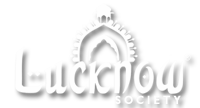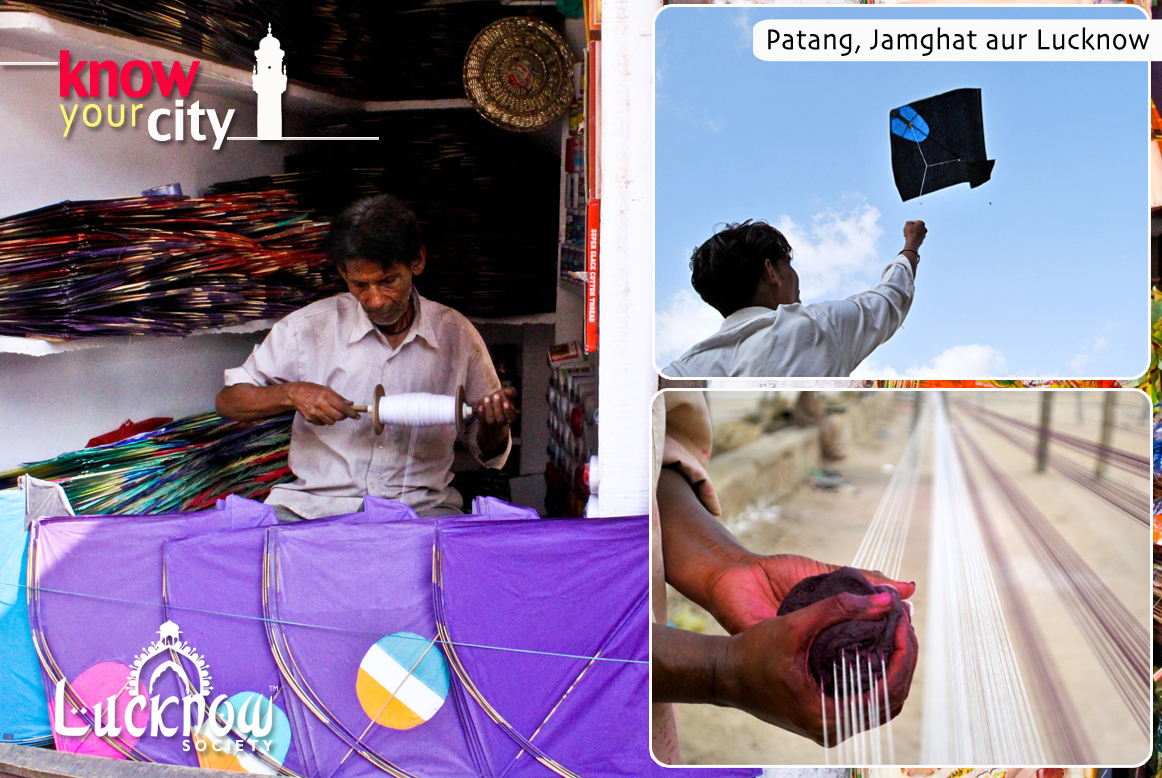Patang, Jamghat aur Lucknow
Churayya, Tikalla, Hatta, Dheel, Pench, Bharra, Latka, Charkhi, etc are some of the popular terms of Patangbazi which are also associated with life in form of various Muhawaras. Kite flying or Patangbazi has been a common pastime activity in Lucknow since ages. Especially in the old city like Chowk, Nakhas, Chaupatiya, Talkatora, Raja Bazar, Daliganj, etc the prevalence of this pass time is an integral part of the life. You would often hear stories from people about their patangbazi experience, mostly near gomti, their rooftop or even in holidays. Jamghat is the day after Diwali where people celebrate the annual kite festival in Lucknow, it is believed to be started from the Nawabi period. Jamghat is a festival which maintains social relationships and harmony in the city. The participation of both Hindus and Muslim with great happiness exhibits the essence of the city. It often gives the illusion of spectrum in the sky. One could see hundreds of kites in varieties of shape and colour floating in the air. The spread of the festival can be noticed from the varying cost of kites, it ranges from Rs. 4 to 60 and over. This season some new kites like Chota Bheem, Spiderman, Obama, Anna and Chinese Kites are in great demand with children. There are also around 45 kite flying clubs in the city.
It is believed ever since the Nawabi era, great care is taken in construction of kite. It was composed of two ‘tukkals’, paper kites, joined together back and front. A batten was fixed to the centre of the frame and was called a ‘thaddi’, black stick, and two curved battens, scraped and softened, were fixed to the top and bottom of the frame and called ‘kamps’ or bows. Later the best form of tukkal was known as patang. One may judge the interest taken in Lucknow from the Nawabi time; it was the time of innovation. Nawab Asaf ud Daula’s tukkals were decorated with gold and silver fringes. Whoever brought one of the Nawab’s tukkal back was given five rupees. In the time of Amjad Ali Shah a paper kite named guddi was invented. In Wajid Ali Shah’s time kites were produced with one and a half bows and back stick, which were quite similar to today’s kites. There were some experts during the same time like Mir Vilayat Ali, who was known world widely for kite flying. At the commencement of the British period ‘kheench’, the dragging and pulling style of kite, was established. Some popular forms of kite that are made in Lucknow are; kankawwa is made with full sheet of paper in the form of wings of bird, pauntava is made from a part of sheet and is most preferred by experts, addhi are kites made from half a sheet, chichi are small kites made of spine of about 6-8inches. Some others are aadi pauntai, taukhiya, dugga, gend tara, chand tara, sawa ki teen, latka, dheel, commander, bangdai, Chinese kites made of plastic, dedh kanni, tukkal etc. Main equipments for flying a kite include saddi, manjha, reel, toon, taar, phirki and charkhi. Making a kite requires great accuracy and care; it’s an art in itself. People often associate the coming of Huien Tsand and Fa Hein, travellers from China who introduced kite in the country. Today in Lucknow there are scores of people who have frittered away lacks of rupees on this pursuit and have achieved prominence and revered in the kite flying circles….after all its all about ‘Pench-Ladana’ !
Credit : Intern – Nishita Banerji

